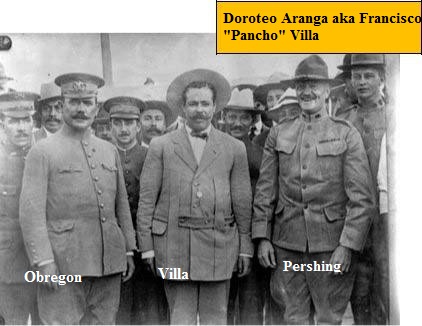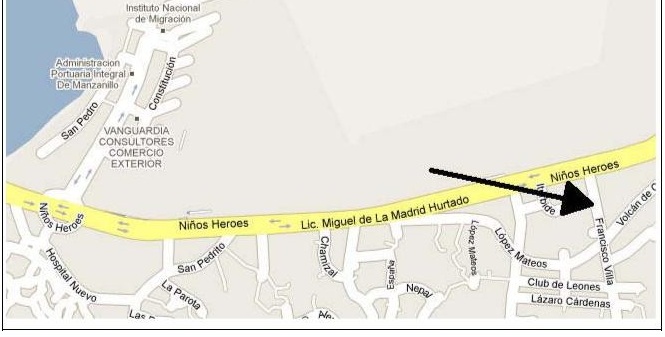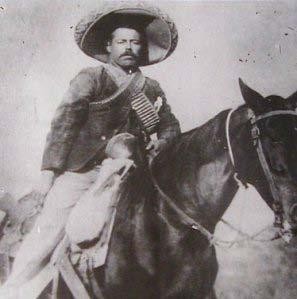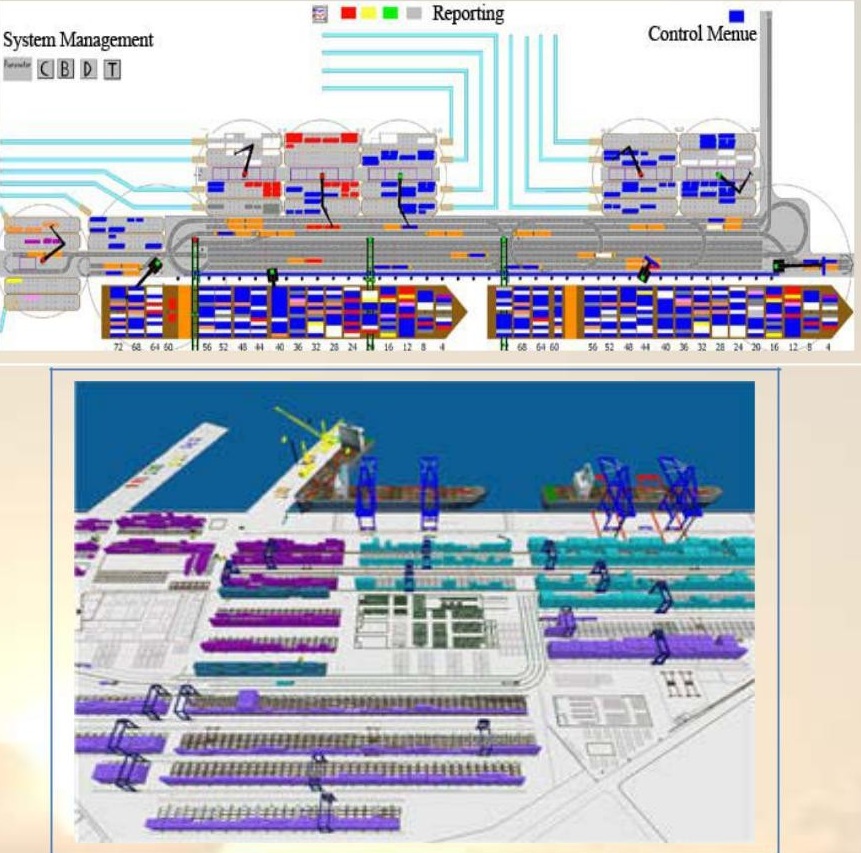By Terry Sovil from the October 2010 Edition
 Francisco “Pancho” Villa
Francisco “Pancho” Villa
1874-1919
Born:8 August 1874
Birthplace:San Juan del Río, Mexico
Died: 20 July 1923, (assassination)
Place of Death:Parral, Chihuahua, Mexico
Best Known As: Peasant hero of the Mexican Revolution
Born Doroteo Arango, Francisco “Pancho” Villa, is described as a killer, bandit and revolutionary leader yet he is remembered as a folk hero. He was considered a friend to poor people of Mexico; afraid of no one. He wanted agrarian reform and was responsible for a raid on Columbus, New Mexico in 1916; the first attack on USA soil since 1812.
Villa was the son of a sharecropper – tenant that gives a share of crops raised as rent – at the hacienda San Juan del Rio, Durango. He experienced harsh peasant life. Villa’s father died when he was 15 and he began working as a sharecropper to help support his mother and 4 siblings. Returning from the fields one day in 1894 he learned the owner of the hacienda planned sex with his 12- year old sister. Villa, age 16, shot the owner and fled to the mountains.
From 1894 to1910 Villa avoided the law hiding in the mountains. Alone, he just survived, but by 1896 he had joined with bandits and became their leader. They stole cattle, robbed shipments of money and harassed the wealthy. He often gave money to the poor and became a sort of Robin Hood. It was during this period he became known as Franciso “Pancho” Villa. No one is sure why he chose that name.
Villa’s success at evading capture was recognized by revolutionaries. They saw him as a guerrilla fighter they could use. Porfirio Diaz, President of Mexico was opposed by Francisco Madero, who promised change for the lower classes. Villa joined Madero’s cause and agreed to be a leader in the revolutionary army.
Villa served from October 1910 to May 1911. An effective leader, he resigned over differences with another commander, Pascual Orozco, Jr. He married Maria Luz Corral on May 29, 1911 and tried to settle into a peaceful life. Madero had become president but unrest restarted. Orozco, considering himself left out of the government, helped start a new rebellion in 1912. Villa gathered troops and worked with General Victoriano Huerta to support Mexico. Huerta accused Villa of stealing a horse and Villa was spared execution but was put in prison from June 1912 to December 1912 when he escaped.
By this time Huerta had switched his support from Madero to allying with Venustiano Carranza. Villa won battle after battle, reallocated land and helped stabilize the economy in northern Mexico. But during the summer of 1914, Villa and Carranza separated. For several years Mexico was in a civil war with the forces of Villa and Carranza.
Villa counted on support from the USA but they supported the Carranza government. He felt USA involvement would discredit Carranza helping him regain popularity. He vowed revenge and with his “pistoleros” launched raids along the USA-Mexico border frightening residents living in Texas, New Mexico and Arizona border towns. USA President Wilson ordered troops deployed to Texas and New Mexico. General John J. Pershing led the mission along with a young lieutenant George S. Patton.

Troops along the border deterred Villa’s attacks but Villa continued to murder USA citizens in Mexico. One of the worst incidents occurred on January 11, 1916 when they attacked a train at Santa Ysabel and removed 17 Texas mining engineers invited by the Mexican government to reopen mines near Chihuahua City. They were executed and the bodies stripped and mutilated. One feigned death and was able to roll into brush and escape. When the people of El Paso learned of the incident the city was placed under martial law to prevent residents crossing into Juarez for revenge on innocent Mexicans.
At 2:30am on March 9, 1916 Villa and 500 “Villistas” attacked the 13th U.S. Cavalry near Columbus, New Mexico. The cavalry, caught by surprise, their rifles chained and locked in gun racks, mounted a response. During Villas retreat he stopped in Columbus and for three hours there was fighting and mayhem. President Wilson organized a force under Pershing to enter Mexico and stop Pancho Villa. Carranza reluctantly agreed with the stipulation that USA troops would not engage regular Mexican troops. This stipulation hampered the effort which failed to catch Villa after more than a year.
Carranza was assassinated on May 20, 1920 and Huerta became the interim president of Mexico. Huerta negotiated retirement with Villa giving him a hacienda in Chihuahua.
His retirement was short.Villa was gunned down on July 20, 1923 in Parral in his 1919 Dodge roadster by seven gunmen that fired 150 shots in two minutes. 16 bullets struck Villa’s body and 4 hit his head. The shooters were given light sentences and speculation is that someone in the Mexican government had him shot because he had become an “embarrassment”.
Download the full edition or view it online
—
Terry is a founding partner and scuba instructor for Aquatic Sports and Adventures (Deportes y Aventuras Acuáticas) in Manzanillo. A PADI (Professional Association of Dive Instructors) Master Instructor in his 36th year as a PADI Professional. He also holds 15 Specialty Instructor Course ratings. Terry held a US Coast Guard 50-Ton Masters (Captain’s) License. In his past corporate life, he worked in computers from 1973 to 2005 from a computer operator to a project manager for companies including GE Capital Fleet Services and Target. From 2005 to 2008, he developed and oversaw delivery of training to Target’s Loss Prevention (Asset Protection) employees on the West Coast, USA. He led a network of 80+ instructors, evaluated training, performed needs assessments and gathered feedback on the delivery of training, conducted training in Crisis Leadership and Non-Violent Crisis Intervention to Target executives. Independently, he has taught hundreds of hours of skills-based training in American Red Cross CPR, First Aid, SCUBA and sailing and managed a staff of Project Managers at LogicBay in the production of multi-media training and web sites in a fast-paced environment of artists, instructional designers, writers and developers, creating a variety of interactive training and support products for Fortune 1000 companies.



You must be logged in to post a comment.